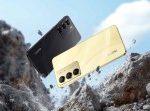
It’s time to part with your old hair straightener.
A wet-to-dry straightener may have worked for you once upon a time. Your trusty university straightener may have gotten the job done for the past decade because it technically still works. But we have to unlearn unhealthy beauty routines all the time. Just like we’ve realised that falling asleep in makeup can be bad for your skin, blasting your locks with 200 degrees Celsius on a daily basis will come back to haunt you.
Bringing self-care to your hair routine means investing in a reliable straightener. Not only are hair tools a true “you get what you pay for” purchase, but they actually have an expiration date: After four years, the plates start to crack, lift, and heat unevenly, causing hot spots that can scorch one end of hair and leave the other wavy. If you’ve noticed your hair getting stuck in the wand, that it’s extra dry and scraggly, or that it’s taking longer than usual to finish a section, your outdated straightener may be the culprit.
Can you straighten hair without damaging it?
Ah, the age-old question. At the end of the day, there’s no fool-proof way to put heat on your hair without feeling the effects eventually. Heat-free methods like meticulous air-drying are thrown around as alternatives, but totally advising against heat is as successful as abstinence-only sex education. Luckily, there are tricks to hold off intensive heat damage.
If you listen to nothing else in this article, listen to this: Don’t rely on the hottest setting to get the job done faster. Like paper, hair burns at 232 degrees Celsius. Sure, hair won’t spontaneously combust, but regular exposure to high heat is the main cause of permanent damage. We talked to Jon Reyman, owner and master stylist at NYC salon Spoke & Weal, and learned that extra high heat once is more damaging to hair than low heat in multiple passes.
Another line of defense comes in the form of thermal protectant sprays. Heat protectant often gets downplayed as an extra step if you have time, but that’s like chilling in the sun without sunscreen and saying “Hope it’s fine.”
“Think of heat protectant as an oven mitt,” Reyman says. “The mitt gets hotter than your hand, but if you are holding a very hot pan, your hand is going to burn eventually. Keep high heat contact to a minimum, and never rest an iron on your hair for long.”
Creating tension from root to tip can decrease the number of passes needed to get a strand straight. Guiding the iron through the hair with a heat-resistant comb will also make the process much smoother. Several TikTok users suggest preceding each pass with a comb to smooth frizz before the heat gets to it.
Can split ends be repaired?
Despite what Pantene adverts say, healthy hair is a journey requiring more than damage-friendly conditioner. Brace yourself, then Google “split ends under a microscope.” Those jagged edges are pieces of the outer layer of the cuticle that have literally snapped. At-home remedies are not bringing those back to life.
The American Association of Dermatology has even confirmed that you can’t 100% repair split ends. Strands can be sealed temporarily, but the only way to permanently get rid of split ends is by cutting them off.
Which plate type is best for your hair?
When heat contact is minimised, it leads to less damage, so it’s more about which straightener has consistent heat settings that can smooth your texture with as few strokes as possible. Plate type is less important, but this Bustle interview describes how certain plate materials may be safer on different hair textures.
-
Ceramic is the default. It provides balanced heat, smooths frizz, and creates a smooth surface for any hair type to float over without snagging. Damaged hair can catch a break from the balanced heat and lower damage potential of a ceramic straightener. This mild intensity also keeps processed hair more vibrant over time.
-
Tourmaline is a semi-precious crystal that typically generates the most negative ions of the three. It’s an especially useful weapon against frizz or dull hair, but quickly turns damaging when too hot. It also corrodes easily and is a smarter purchase for occasional events that require really shiny hair.
-
Titanium is similar to tourmaline but is a metal with a higher heat threshold. It gets super hot and does so within seconds, and the heat stays constant throughout the barrel. If your unruly tresses have you ready to give up, the fierce conduction of titanium could do the trick. This is clutch for thick hair, but will cause more harm than good on fine hair.
“Ionic” is buzzword you may hear a lot in hair care conversations. The heated plates on many straighteners produce negative ions that attach to your positively-charged hair, ultimately minimising static and promoting shine. Tourmaline and titanium emit negative ions at an exponentially higher rate than ceramic, but straighteners advertised as “ionic” are probably still one of these materials.
Are cordless hair straighteners worth it?
Short battery life is a main concern when it comes to straightners that don’t plug in. Because they’re supplying their own power, the massive batteries in some models make them heavier in your hand. Not all cordless straighteners succumb to these tropes, and not all heads of hair require more than half an hour to style. Plus, being able to touch up your hair without access to a plug is an undeniable plus for travelling.
What is the best hair straightener?
After reaching out to stylists via Instagram, comparing online reviews, interviewing the owner of a salon, and watching a slew of beauty blogger reviews on YouTube and TikTok, these are the straighteners that stand out as the best in 2022.
Powered by WPeMatico






